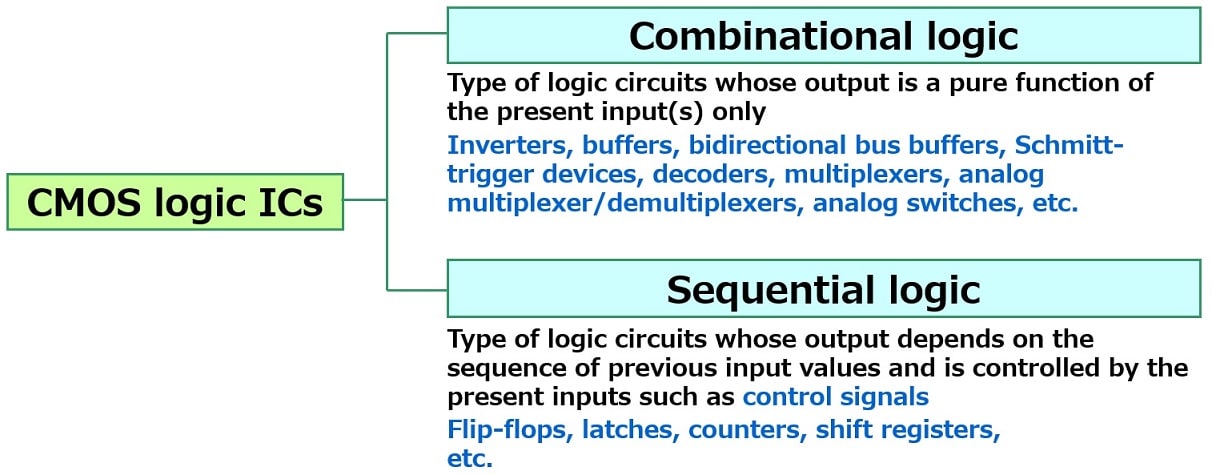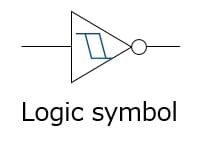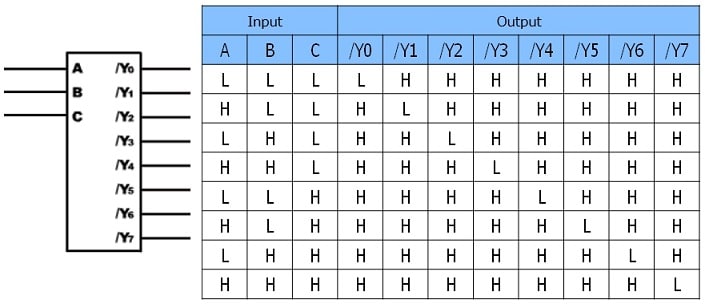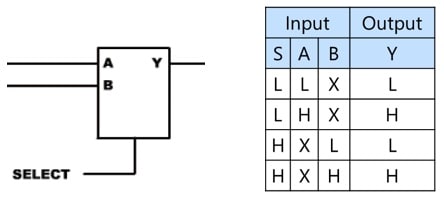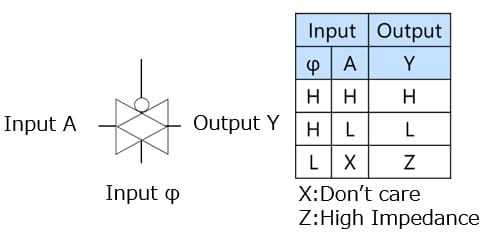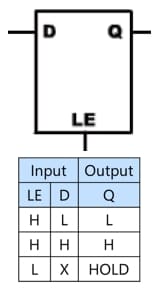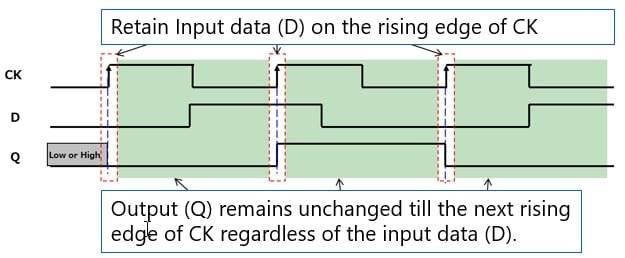- General Top
- SEMICONDUCTOR
- STORAGE
- COMPANY
-
My ToshibaSemicon
- Semiconductor Top
-
ApplicationsAutomotive
Body Electronics
xEV
In-Vehicle Infotainment
Advanced Driver-Assistance Systems (ADAS)
Chassis
IndustrialInfrastructure
BEMS/HEMS
Factory Automation
Commercial Equipment
Consumer/PersonalIoT Equipment
Healthcare
Wearable Device
Mobile
Computer Peripherals
-
ProductsAutomotive Devices
Discrete Semiconductor
Diodes
Transistors
Logic ICs
Analog Devices
Digital Devices
Wireless Devices
※
: Products list (parametric search)
Power SemiconductorsSiC Power Devices
※
: Products list (parametric search)
Isolators/Solid State RelaysPhotocouplers
Digital Isolators
Solid State Relays
Fiber Optic Transmitting Modules
※
: Products list (parametric search)
MOSFETsIGBTs/IEGTsBipolar Transistors※
: Products list (parametric search)
Diodes※
: Products list (parametric search)
MicrocontrollersMotor Driver ICsIntelligent Power ICs※
: Products list (parametric search)
Power Management ICsLinear ICs※
: Products list (parametric search)
General Purpose Logic ICsLinear Image SensorsOther Product ICsOther Product ICs
※
: Products list (parametric search)
-
Design & Development
-
Knowledge
- Where To Buy
- Part Number & Keyword Search
- Cross Reference Search
- Parametric Search
- Stock Check & Purchase
This webpage doesn't work with Internet Explorer. Please use the latest version of Google Chrome, Microsoft Edge, Mozilla Firefox or Safari.
require 3 characters or more. Search for multiple part numbers fromhere.
The information presented in this cross reference is based on TOSHIBA's selection criteria and should be treated as a suggestion only. Please carefully review the latest versions of all relevant information on the TOSHIBA products, including without limitation data sheets and validate all operating parameters of the TOSHIBA products to ensure that the suggested TOSHIBA products are truly compatible with your design and application.Please note that this cross reference is based on TOSHIBA's estimate of compatibility with other manufacturers' products, based on other manufacturers' published data, at the time the data was collected.TOSHIBA is not responsible for any incorrect or incomplete information. Information is subject to change at any time without notice.
require 3 characters or more.
Sequential Logic: Counters

Counters
Examples: 74VHC393, 74VHC161
Counters count up or down sequentially on every clock (CK) pulse. A four-bit counter can have a modulus of up to 16; an eight-bit counter up to 256; and a 14-bit counter up to 16384. Some counters have the CLR input that is used to initialize the internal state to a known value.
Counters are incorporated in digital timers, electronic calculators, stopwatches, and many other devices.
Counters are broadly divided into asynchronous (ripple carry) and synchronous (parallel carry) counters. Let the propagation delay time of a single flip-flop be tpd. Then, an n-stage asynchronous counter incurs a large delay equal to n×tpd. It should also be noted that the asynchronous counter could produce hazards when the counter output is fed to a logic gate.
74VHC393 four-bit counter
Asynchronous: Ripple carry counter

Logic schematic of the 74VHC161 four-bit counter
Synchronous: Parallel carry counter
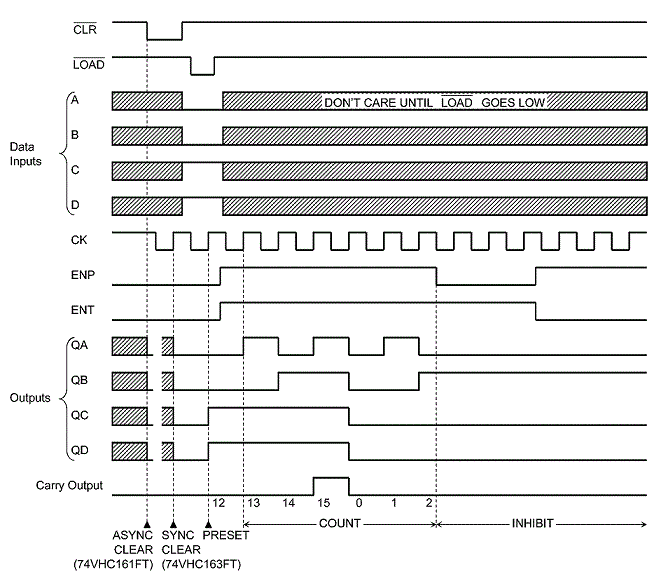
Timing diagram: The following shows the timing diagram of a typical synchronous (parallel carry) counter, which counts upward sequentially on each edge of the clock (CK).
Chapter3 Basic CMOS Logic ICs
Products
Related information
- Application Notes
- FAQ
